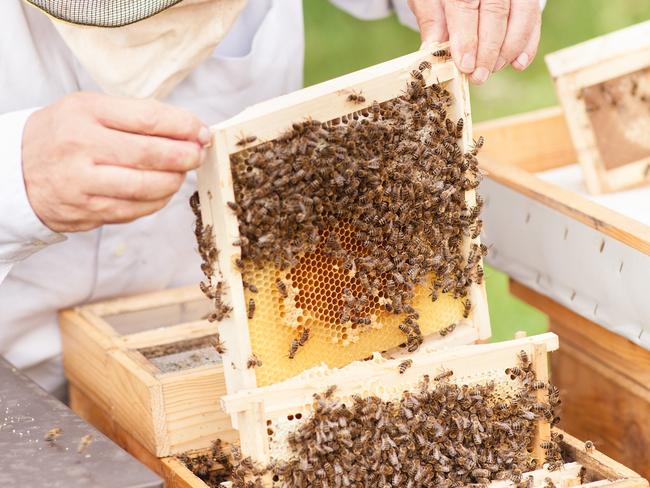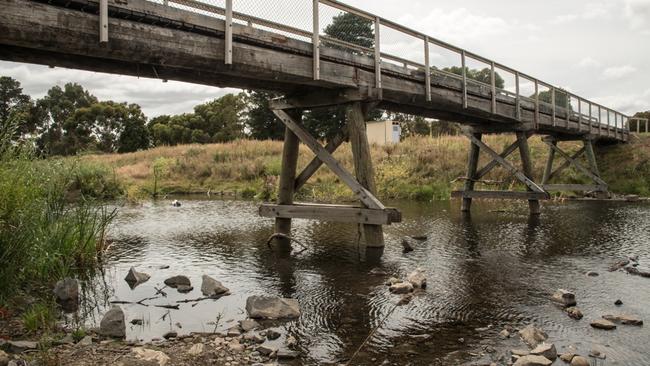EpiPen may have increased bee farm worker’s chance of survival, coroner rules
A man who died from anaphylactic shock after being stung by a bee may have had his chances of survival increased if there had been an EpiPen available, a coroner has found.
Police & Courts
Don't miss out on the headlines from Police & Courts. Followed categories will be added to My News.
- Darko Krajinovic fined an extra $90K for Mt Stuart demolition
- Brothers deny assaulting five police officers during dramatic arrest
A MAN who died from a bee sting while working for a honey company may have had his chances of survival increased if there had been an EpiPen on site, a coroner has found.
Wallace Edgar Bryers died aged 61 from anaphylactic shock while placing beehives with TasiLiquid Gold, now known as The Honey Pot, on January 5, 2018.
The company disputed Mr Bryers was ever their employee and a coronial inquest considered the circumstances of his death as well as whether he was a worker or volunteer.
Coroner Andrew McKee handed down his findings on Friday.
He said on the day of his death, Mr Bryers was seen removing the hood attached to his bee suit and adjusted his hair before saying he had bees in his suit and was being stung.
Mr Bryers placed the hood back on and crushed the bees in his hood, but while travelling down the road in a truck, he indicated he felt dizzy and sick.
The truck stopped and Mr Bryers started removing his clothes while others called triple-0.
Mr McKee said Mr Bryers became unresponsive and lost consciousness.
CPR was performed, but he died at the scene.

Mr McKee said the honey company did not have an epinephrine injector – commonly known as an EpiPen – in the first aid kits in vehicles that would be used in the field when dealing with beehives at that time, but that had since changed.
“Whilst I cannot make a positive finding that the administration of adrenaline to Mr Bryers via an EpiPen would have prevented his death, I am satisfied on the balance of probabilities had Mr Bryers been administered adrenaline within the first 30 minutes after his anaphylactic reaction, his chances of survival would have increased,” Mr McKee wrote.
The coroner found Mr Bryers was a worker for the purposes of the Work Health and Safety Act.
He recommended apiary businesses, at a minimum, inquire if an individual had a known allergy to bee venom, provide appropriate safety equipment and clothing and training, have people on site appropriately qualified in first aid, and that first aid kits contain EpiPens that employees had been trained to use.
Mr McKee also recommended people who have beehives on a smaller scale or as a hobby should also consider being trained in first aid and the administration of EpiPens.
Woman challenges autopsy on mother’s body
A woman who challenged the Coroner’s decision to undertake an autopsy on her deeply religious mother’s body, which was found in a river, has heard the autopsy will proceed.
Keturah Matepi Triffitt had filed an application under section 38 of the Tasmanian Coroners Act, requesting an autopsy not be performed on her mother Stella Joan Fraser’s body in a Supreme Court dispute.
The legislation includes a mechanism whereby the court can exercise its discretion to override a coroner’s decision that an autopsy is necessary.
On Friday morning, Chief Justice Alan Blow said “the sooner it can be dealt with, the better” and directed “no further autopsy” be conducted upon the woman’s body while the case proceeded through court.

Chief Justice Blow told the Supreme Court on Friday evening 72-year-old Ms Fraser had dementia at the time of her death.
“She was last seen alive at the Lachlan Hotel, Ouse on Friday last (June 4 2021) when she left the hotel some time after 6pm having dined there,” he said.
Chief Justice Blow said Mrs Triffitt reported her mother missing three days later on June 7, with her body reported found in River Ouse in the Derwent Valley by a neighbour on June 8.
Mrs Triffitt told the court her mother would sometimes wander on walks, and said she believed her mother had accidentally fallen in and drowned.
“When she stayed at my house she couldn’t get out of the bed to go to the toilet,” Mrs Triffitt said.
“Because I know how my mum was I can imagine what has taken place.”
Mrs Triffitt said she and her mother held deeply religious views opposed to tampering with the body, and said her mother had told her she “didn’t agree with autopsy” or surgery.
“I do believe in the rapture,” Mrs Triffitt said.
“Her body belongs to Jesus.

“I’ll just leave this in God’s hands. Everyone knows what is in my heart. I’d like to just be at peace with it and that’s my desire.”
Chief Justice Blow said, “I realise it’s going to be very upsetting for you if I’m going to allow the autopsy to proceed”.
State forensic pathologist Dr Donald Ritchie said a fall into the river was “likely” to have occurred, but without an autopsy he “absolutely cannot” rule out foul play.
“It breaks my heart saying the state needs to perform an autopsy on your mother when that is against your wishes,” Dr Ritchie said.
“An autopsy will help determine what did happen and perhaps just as important what didn’t happen and I hope that you find some comfort in that.”
Crown Counsel Gretel Chen said post-mortems were sought in suspicious or unusual or accidental circumstances.

She said failure to report the deceased missing and the length of time that passed before finding Ms Fraser’s body could be considered suspicious.
“A post-mortem is also sought to find out how the deceased came to be found in the Ouse River,” Ms Chen said.
Chief Justice Blow said his difficult decision was “a balancing exercise” between the family’s spiritual beliefs about the sanctity of the human body and the state’s arguments for an autopsy.
“Ms Fraser was elderly, she was vulnerable, she died in a public place,” he said.
He said foul play was “unlikely”, but said “it can’t be adequately ruled out without an autopsy”.
“I think it’s significant that in the event that there was foul play, not conducting an autopsy might mean that the offender may decide to reoffend,” Chief Justice Blow said.
“I’ve concluded that this is a case where an autopsy should proceed. I’m not going to make an order that there be no autopsy.”


